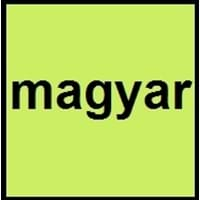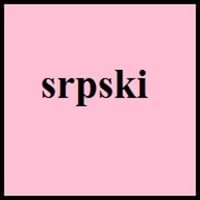Countries
European Union, Hungary, Serbia, Vojvodina, Serbia
Bosnia and Herzegovina, Kosovo, Serbia, Slovakia
National Language
Austria, Gambia, Hungary, Romania, Serbia, Slovakia, Slovenia, Ukraine
Bosnia, Croatia, Montenegro, Serbia
Second Language
United States of America
Not spoken in any of the countries
Speaking Continents
Africa, Europe
Europe
Minority Language
Austria, Croatia, Romania, Slovakia, Slovenia, Ukraine
Croatia, Czech Republic, Hungary, Macedonia, Montenegro, Romania, Slovakia
Regulated By
known, Research Institute for Linguistics of the Hungarian Academy of Sciences (Magyar Tudományos Akadémia Nyelvtudományi Intézete)
Board for Standardization of the Serbian Language
Interesting Facts
- Hungarian language has only preserved most of its ancient elements.
- 'Magyar' is the Hungarian name for the language, the 'Magyar' is also used as an English word to refer to Hungarian people.
- Serbian language was derived from the Old Church Salvic, as the language was commonly spoken by most of Slavic people in the 9th Century.
- Serbian language is based on Stokavian dialect.
Similar To
Mansi and Khanty Languages
Bosnian and Croatian Languages
Derived From
East and South Slavic Languages
Not Available
Alphabets in
Hungarian-alphabets.jpg#200
Serbian-Alphabets.jpg#200
Scripts
Latin
Cyrillic, Latin
Writing Direction
Left-To-Right, Horizontal
Left-To-Right, Horizontal
Hello
szia
Здраво (Zdravo)
Thank You
köszönöm
Хвала лепо (Hvala lepo)
How Are You?
Hogy vagy?
Како си? (Kako si?)
Good Night
Jó Éjszakát
Лаку ноћ (Laku noć)
Good Evening
jó Estét
Добро вече (Dobro veče)
Good Afternoon
Jó Napot Kívánok
Добар дан (Dobar dan)
Good Morning
jó Reggelt
Добро јутро (Dobro jutro)
Please
Kérlek
Молим (Molim)
Sorry
bocsi
Жао ми је (Žao mi je)
Bye
viszlát
Довиђења (Doviđenja)
I Love You
Szeretlek
Волим те (Volim te)
Excuse Me
elnézést
Извините (Izvinite)
Dialect 1
Csángó
Prizren-Timok
Where They Speak
Bacău County, Rumania
Southeastern Serbia
Dialect 2
Oberwart
Smederevo–Vršac
Where They Speak
Austria
Serbia
Dialect 3
Székely
Torlakian
Where They Speak
Székely Land
Bulgaria, France, Kosovo, Macedonia, Romania, Serbia
How Many People Speak
Not Available
Speaking Population
Not Available
Second Language Speakers
Not Available
Native Name
magyar / magyar nyelv
српски (srpski) српски језик (srpski jezik)
Alternative Names
Magyar
Montenegrin
French Name
hongrois
serbe
German Name
Ungarisch
Serbisch
Pronunciation
[ˈmɒɟɒr]
[sr̩̂pskiː]
Ethnicity
Hungarians
Serbs
Origin
1192 AD
11th Century
Language Family
Uralic Family
Indo-European Family
Subgroup
Finno-Ugric
Not Available
Branch
Ugric
Not Available
Early Forms
Old Hungarian
No early forms
Standard Forms
Modern Hungarian
Standard Serbian
Signed Forms
Not Available
Not Available
Scope
Individual
Individual
ISO 639 6
Not Available
Not Available
Glottocode
hung1274
serb1264
Linguasphere
ohu
53-AAA-g
Language Type
Living
Living
Language Linguistic Typology
Subject-Object-Verb
Subject-Verb-Object
Language Morphological Typology
Agglutinative, Synthetic
Not Available
All Hungarian and Serbian Dialects
Most languages have dialects where each dialect differ from other dialect with respect to grammar and vocabulary. Here you will get to know all Hungarian and Serbian dialects. Various dialects of Hungarian and Serbian language differ in their pronunciations and words. Dialects of Hungarian are spoken in different Hungarian Speaking Countries whereas Serbian Dialects are spoken in different Serbian speaking countries. Also the number of people speaking Hungarian vs Serbian Dialects varies from few thousands to many millions. Some of the Hungarian dialects include: Csángó, Oberwart. Serbian dialects include: Prizren-Timok , Smederevo–Vršac. Also learn about dialects in South American Languages and North American Languages.
Hungarian and Serbian Speaking population
Hungarian and Serbian speaking population is one of the factors based on which Hungarian and Serbian languages can be compared. The total count of Hungarian and Serbian Speaking population in percentage is also given. The percentage of people speaking Hungarian language is 0.19 % whereas the percentage of people speaking Serbian language is Not Available. When we compare the speaking population of any two languages we get to know which of two languages is more popular. Find more details about how many people speak Hungarian and Serbian on Hungarian vs Serbian where you will get native speakers, speaking population in percentage and native names.
Hungarian and Serbian Language Codes
Hungarian and Serbian language codes are used in those applications where using language names are tedious. Hungarian and Serbian Language Codes include all the international language codes, glottocodes and linguasphere.





